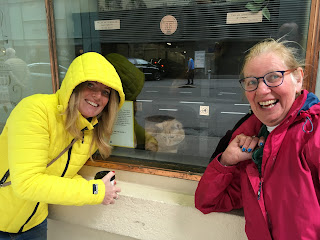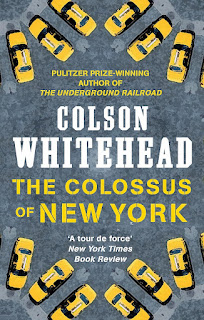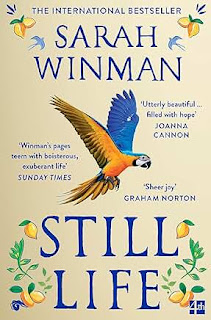 |
| Is this the truthiness? |
Truthiness – word of the year in the Merriam-Webster for 2005, even though it was coined on Stephen Colbert's US TV comedy satire show, to demonstrate how people deceive themselves, despite the evidence or any logic that disputes their belief. Truthiness can range from ignorant assertions of falsehoods to propaganda intended to sway opinions. The invented word was supposed to be 'funny for give minutes', but it has emerged as a major subject for discussion in US politics. The truth in journalism is set in stone: it’s not a malleable or debatable concept. This was a lesson the infamous journalist Steven Glass learnt. In Shattered Glass, a 2003 biographical drama film, the writer Billy Ray told the true story of Glass, who was fired by the The New Republic magazine after inventing most of the 'facts' in his articles. Some of his articles were funny, if untrue, such as the 'convention of Monica Lewinsky memorabilia but some articles were racist and sexist lies. His fabrications nearly destroyed the reputable magazine, founded a hundred years before.
But there is a difference between hard journalism – that is an articles trusted to be as much the truth as the writer can possibly know and pass on – and creative kinds of non-fiction writing, such as memoir, creative journalism, narrative literature and possibly even bio-fiction. These are genres that are increasing in popularity, and while these may not always relate the exact facts of a previous event, they hope to create a truth with their creativity, rather than 'truthiness'.
Some writers have trouble with the idea that “creative writing” and “non-fiction” go together. A start, perhaps is to think of your writing as “told well” rather than “made up.” It's still confusing though, and leads us into a deeper consideration of what we mean by 'writing truthfully'. Bio-fIction has been slated in the past as misrepresenting what really happened. But that is not what the creative writer wants, or aims for. They are not attempting to hide behind 'truthiness', but rather create something that will enter the reader's heart.

Creative non-fiction writing is able to tell both the small story – the damming of a river, the building of a house, an untimely death – and the bigger one, the human narrative with its enduring themes. In doing this, imaginative non-fiction writers commonly use the techniques of fiction – the creation of a narrative arc, character development, scene-setting, action sequences, dialogue and interior monologue. True stories told using these techniques have both the drama of fiction and the force of fact. Creative non-fiction, though factual, can read like fiction in that it draws you in with attention to detail, clear imagery, metaphors, and other creative writing techniques. In Wolfe Hall, and indeed her three books on Cromwell, Hilary Mantel attempts, not to move away to the truth, but to illuminate it. In her Reith Lecture she said: From history, I know what they do, but I can’t with any certainty know what they think and feel. That fictional approach allowed her to dig into her character's minds and create a fully realised person, who has, in a strange way, particularly through the TV dramas taken from the books, become the 'real Cromwell'.
One of the approaches the non-fiction writer takes is to know that what they are doing will convey the truth. To convey a truth may mean writing something that actually didn't happen in quite that way, or quite that order. It may mean looking at what people might have thought, or how their motives might have moved their intentions.
The line between life writing and fiction is often blurred: even when writing autobiographical material the writer cannot clearly remember absolutely everything. And, to make the events of the past more clear, and indeed, more readable, my massage time, and description, and dialogue, and interior monologue to aid the telling of a truth.
Finding your comfort zone within this fusion of fact and imagination may take a little time, and a little thought. But try not to worry whether your life writing will be
strictly non-fiction or veer over into bio-fiction. A rule of thumb is to be more focused on the creativity of your work than what category it falls into.Penelope Lively’s distinctive memoir, Making it Up, addresses truth and imagination head-on by taking specific moments from her life and rewriting. In the chapter Imjin River, she writes about her husband, Jack Lively, in this speculative way:
I might never have known him. We might never have met. There might never have been our children, and theirs, and the forty-one years of love and life and shared experiences, and those long hard months at the end. What follows supposes what so nearly happened; the fate of a young man who is a shadow of Jack for whom events ran differently.
The definitions of ‘fiction’ and ‘non-fiction’ are, therefore, subtle and flexible, and can be exploited to the writer’s benefit.
Exercise: What Happens to Childhood Memories?
STAGE ONE
Think back to your childhood. Choose a memory – one that’s fuzzy, rather than one that’s crystal clear in your mind. Recount the incident on paper, just as you remember it. Talk to yourself as you write.... I can’t remember what they said now, but what I can recall is that at the time of listening...Don’t worry at all about how creatively you write this for the moment – the key thing at this stage of this exercise is accuracy of memory.
Write between 200 and 800 words, then read through what you’ve written and change anything that you now remember more clearly. Take out anything that you feel isn't a true memory.
STAGE TWO
Now rewrite these bald facts as a very short story or extract from an unwritten fiction. Use freewriting. In other words, don’t spend hours working on plot and character. You already have sufficient for the purpose of this set of exercises.
Three useful tips:
• ‘Dip down’ into a specific scene.
• Concentrate on the scene, not the facts surrounding it
• Let the facts just be your starting point. Have as much fun as you like in making things up. Twist the facts to suit yourself or stick to them entirely if you wish
Aim for up to 800 words. STAGE THREE
Allow several days for the previous exercise to ‘settle’.
When you’re ready to resume, re-read both the factual account and the ‘mini short story’ and think about how you would fuse the two to create a piece of imaginative non-fiction.
Consider using these elements from the factual account:
• the immediacy of the memories
• your thoughts on those memories as you jotted them down
• the surrounding facts – what you later discovered about the even, perhaps online, or through photographs
Consider using these elements of writing fiction:
Interior monologue • dialogue • scenes • detailed imagery • changes in the actual sequence one events to add tension.
This time, rather than write fiction, as before, create a new piece of imaginative non-fiction that will fill in the ‘fuzzy bits’ that you don’t actually recall from the event. These won’t necessarily be the absolute truth, but will have a sense of truthfulness. Write to any length you prefer.
Exercises like these can help you understand the difference between truth (and truthiness!) and creativity in writing non-fiction It can also help you continue to find your own distinctive writer’s voice.




























